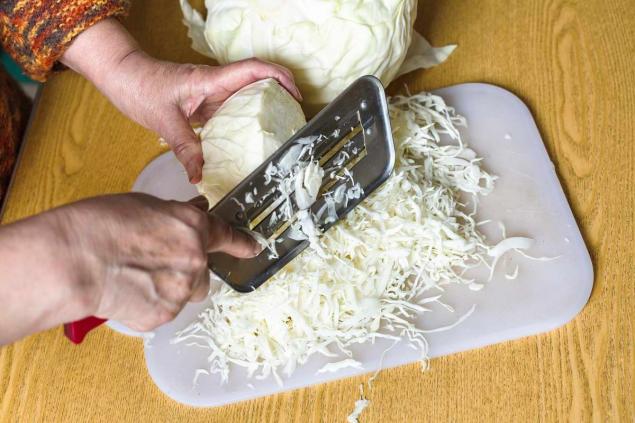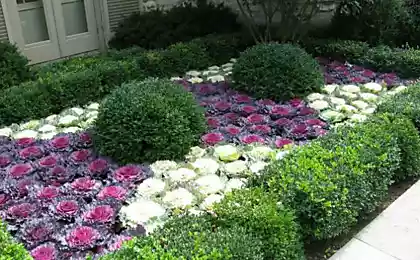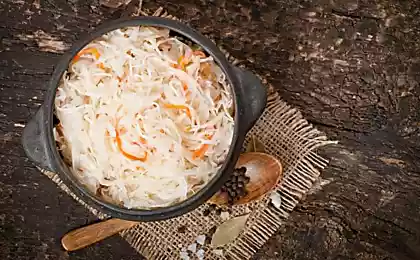128
The gardener shared a method to grow “faced” cabbage
Tasty and healthy cabbage takes not the last place in our diet. And from the opportunity to plant a juicy vegetable with their own hands will not refuse any hostess. We tell you how to grow cabbage in the cottage of a large one to the envy of all neighbors.

© Phere How to grow cabbage in the country Healthy and strong seedlings First you need to decide what cabbage and what you need. Early varieties mature very quickly, but differ in low yield.

Coaches of such cabbage, as a rule, are small and loose, suitable only for eating fresh. Medium ripe varieties are suitable for salting and salads.

But cabbage of late varieties is the hardest, most productive and best suited for long-term storage. From the choice of cabbage variety will depend on the timing of its sowing for seedlings. For early cabbage, it is early to late March, for medium-sized varieties from late March to mid-April, and the seeds of late varieties can be sown from early to late April.
More precisely, you can determine the date of sowing by the formula: 10 days from sowing to the appearance of sprouts plus about 50 days from the first sprouts to the date of the expected landing in the ground.

The soil for cabbage seedlings has been prepared since autumn. Mix sod soil and humus in a ratio of 1: 1. Add wood ash to the soil in a 1:10 ratio. Such soil will prevent the appearance of a black leg on a cabbage seedling.

To seedlings of cabbage was strong, do not neglect the dive. The sprouts that appear must be thinned, leaving each plant with an area of 2 x 2 cm. After two weeks, the seedlings will need to dive, increasing the “living space” of each to 3 x 3 cm. And after two weeks, transplant into separate cups.
Before planting cabbage in the open ground, prepare planting holes. Fill each with a mixture of humus, egg shell (1 tablespoon), wood ash (1 tablespoon), superphosphate (1 teaspoon) and mustard powder (1 teaspoon).

Mix all the components, pour a warm solution of potassium permanganate. This will protect the roots of seedlings from pests hunting before them. Wait for the pits to cool down and plant seedlings, cover her with mulches from well-interrupted humus.

Water the cabbage for 3-4 days daily, and then, if not very hot, every 3 days. When threatened with frost, cover with plastic bottles without a bottom. After two weeks, feed with nitrogen fertilizer (1 tablespoon per 10 liters of water, 300 ml for each plant).
Further, before the formation of cocks every two weeks, feed cabbage with potash fertilizer with a dosage of 10 grams per 1 square meter. To avoid the invasion of cruciferous fleas and cabbage fly, spray the plants with a decoction of green tomato leaves or carbophosome (60 grams per 10 liters of water).

© Phere How to grow cabbage in the country Healthy and strong seedlings First you need to decide what cabbage and what you need. Early varieties mature very quickly, but differ in low yield.

Coaches of such cabbage, as a rule, are small and loose, suitable only for eating fresh. Medium ripe varieties are suitable for salting and salads.

But cabbage of late varieties is the hardest, most productive and best suited for long-term storage. From the choice of cabbage variety will depend on the timing of its sowing for seedlings. For early cabbage, it is early to late March, for medium-sized varieties from late March to mid-April, and the seeds of late varieties can be sown from early to late April.
More precisely, you can determine the date of sowing by the formula: 10 days from sowing to the appearance of sprouts plus about 50 days from the first sprouts to the date of the expected landing in the ground.

The soil for cabbage seedlings has been prepared since autumn. Mix sod soil and humus in a ratio of 1: 1. Add wood ash to the soil in a 1:10 ratio. Such soil will prevent the appearance of a black leg on a cabbage seedling.

To seedlings of cabbage was strong, do not neglect the dive. The sprouts that appear must be thinned, leaving each plant with an area of 2 x 2 cm. After two weeks, the seedlings will need to dive, increasing the “living space” of each to 3 x 3 cm. And after two weeks, transplant into separate cups.
Before planting cabbage in the open ground, prepare planting holes. Fill each with a mixture of humus, egg shell (1 tablespoon), wood ash (1 tablespoon), superphosphate (1 teaspoon) and mustard powder (1 teaspoon).

Mix all the components, pour a warm solution of potassium permanganate. This will protect the roots of seedlings from pests hunting before them. Wait for the pits to cool down and plant seedlings, cover her with mulches from well-interrupted humus.

Water the cabbage for 3-4 days daily, and then, if not very hot, every 3 days. When threatened with frost, cover with plastic bottles without a bottom. After two weeks, feed with nitrogen fertilizer (1 tablespoon per 10 liters of water, 300 ml for each plant).
Further, before the formation of cocks every two weeks, feed cabbage with potash fertilizer with a dosage of 10 grams per 1 square meter. To avoid the invasion of cruciferous fleas and cabbage fly, spray the plants with a decoction of green tomato leaves or carbophosome (60 grams per 10 liters of water).
Crying from onions is useful, but not in the case when the onions spoil in the beds
Centenarians shared a daily routine that will help to meet the hundredth birthday



















